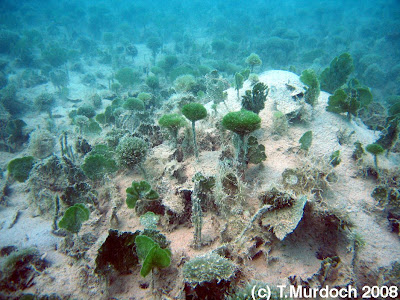In Bermuda, it is a myth that you have to travel by boat to see beautiful coral reefs. From the richly diverse coastal habitats and patch reefs of the north shore to the topographically appealing reefs of the south shore, there are countless near-shore snorkel spots that you can explore, no life jacket required! My favourite near-shore snorkel spot would have to be Church Bay, as it offers fantastic reef formations and a wide diversity of marine life. On an average day, Church Bay can be quite rough, so it’s best to visit on a day with calm winds. Although there are interesting reefs along the coastline, snorkel past these to the central boiler reefs. Here you will find friendly trunkfish, trumpetfish, schools of chub and bream, several species of parrotfish, and dozens of other types of reef fish. The corals are also brilliant, and you will see many massive boulder corals, brain corals, and large waving sea plumes, rods, and fans. If you keep your eyes peeled, you may also...














.jpg)